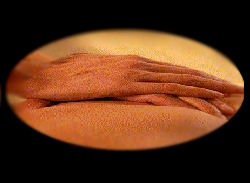

There are only a few important differences when compared to the Adult CPR as mentioned before. Maintaining airway: Cricoid pressure, known as 'Sellicks Manoeuvre', is standard practice in anesthesia incubation and resuscitation. It is used to prevent the regurgitation of gastric and oesophageal contents. The application of cricoid pressure is difficult to perform optimally. The incorrect application of cricoid pressure can have serious consequences including death. Therefore, trainees need to have enough experience in applying cricoid pressure techniques before they are required to administer the technique on patients. HOW TO PERFORM CRICOID PRESSURE: Locate the most prominent protuberance on the front of the neck in the midline (the thyroid prominence) Find this point then run you finger towards the patient's feet (staying in the midline) until you feel your finger drop into the cricothyroid notch or membrane. The next horizontal bar is the cricoid cartilage. Place the thumb and index finger on either side of the cricoid cartilage and press directly backwards with an optimal force against the cervical vertebrae. Breathing: this is more difficult in a pregnant woman as there is a greater need for oxygen, increased resistance of the chest and abdomen to expansion and difficulty in seeing the chest movements. Circulation: the uterus compresses on the inferior vena cava. Hence tilting the patient on her left side reduces the pressure on the large veins. The patient can be placed on her left side by two methods
|